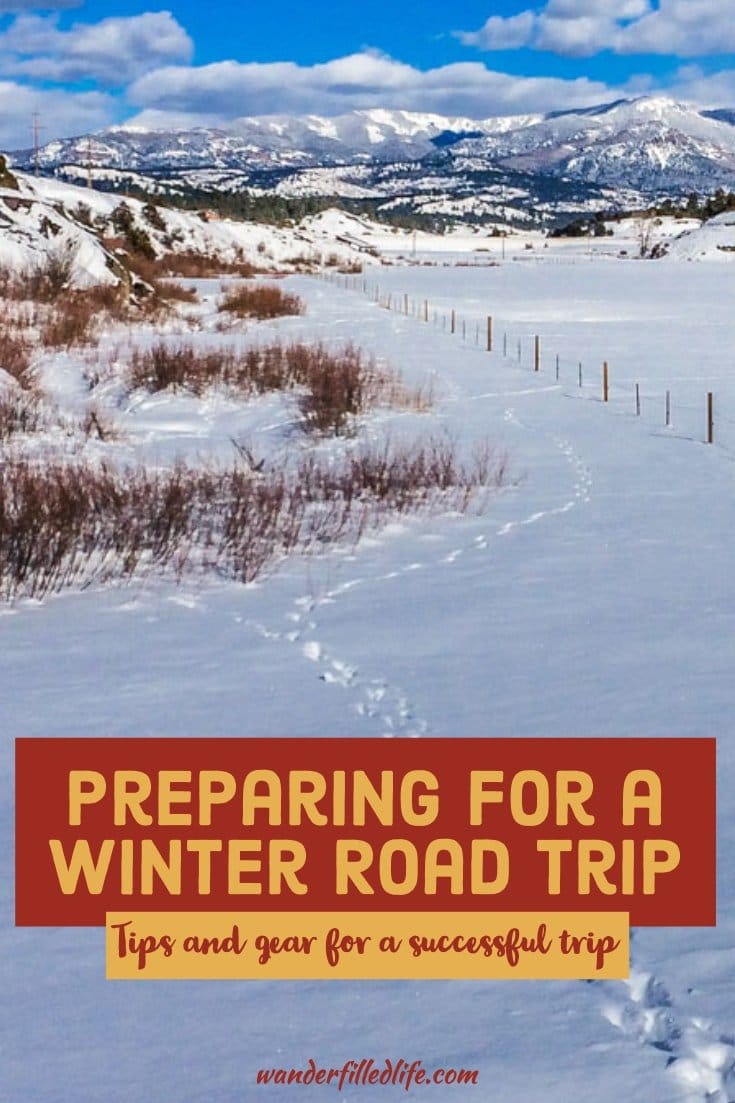Last Updated on February 19, 2024 by Grant
When you are a teacher or have school-aged children, you can’t pick and choose when you have vacations. One of our major breaks is the two weeks we get off at Christmas and New Year’s. To take advantage of this time off, we enjoy a winter road trip even though the weather isn’t always great.
As much as we would love to spend our Christmas Break down in the Caribbean, basking in the sun and sipping on fruity drinks, we know it is the high season, which means prices go up.
Instead, we often take to the road, exploring our country and seeing national parks sites. We started this back in 2013 when we just decided to head out West on a whim. While we love spending time with our families, sometimes you just need to spend the holiday on your own and that’s what we did.
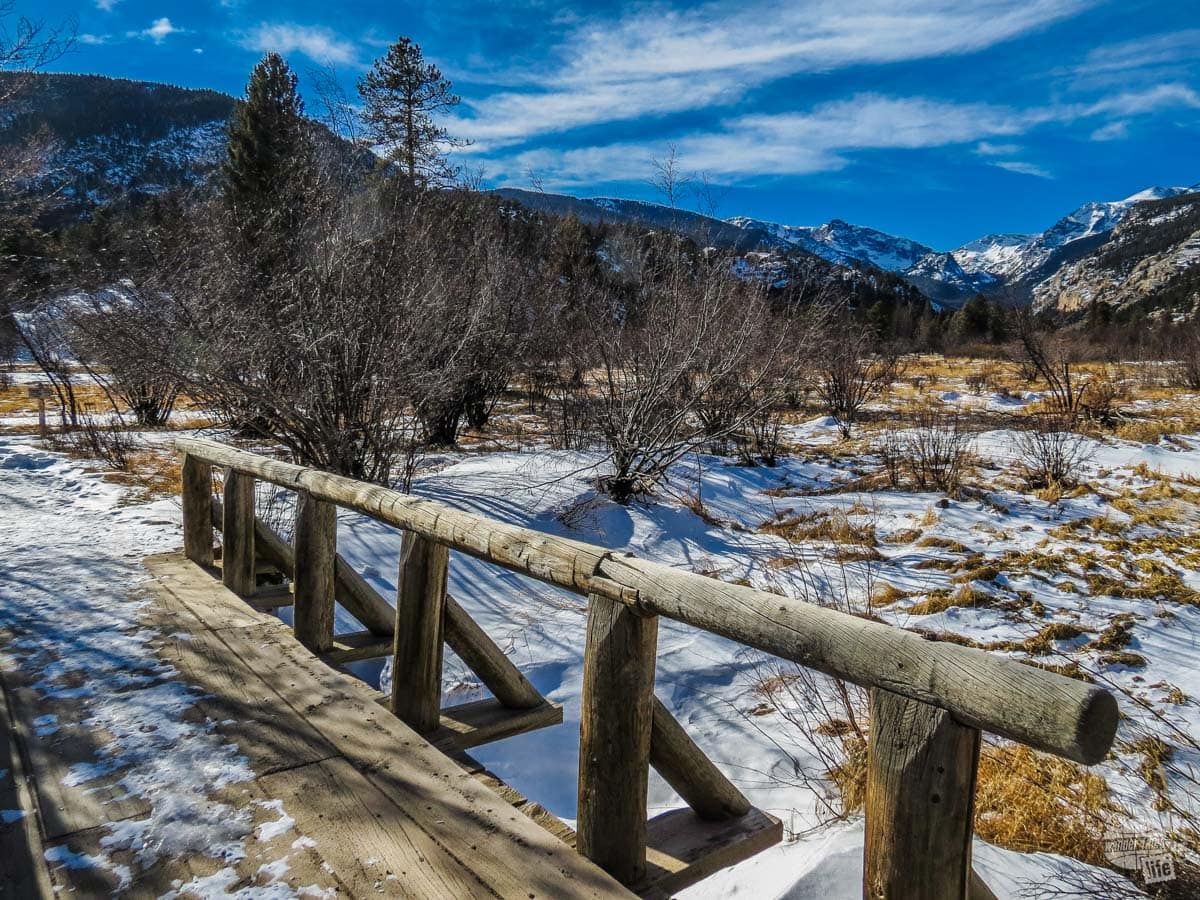
We ended up in Rocky Mountain National Park and discovered several cheap Hilton properties for our westward treks. Since then, we have traveled west to Wyoming, Montana, Idaho, Utah and Colorado. In 2017, we toured the Mid-Atlantic and southeast, from New Jersey to Virginia.
We are already planning our trip for this winter and are tentatively planning on heading to southern New Mexico.
But planning a winter road trip, particularly over Christmas and New Year’s takes a little a bit more forethought than a summer road trip in almost every aspect of the trip.
(Disclaimer: When we link to places where you can buy our stuff or places we stayed, we are using special codes that earn us commissions on the sales at no additional cost to you. Please see our Review Policy for more information.)
Why do a Winter Road Trip?
I really can’t stress this enough: Winter has its own sort of beauty, particularly out West. Getting out when the temperatures are low can be tough. It takes forethought and caution, but the reward is breathtaking.
There is something so magical about the quiet in Yellowstone’s Lamar Valley in the winter. Seeing snow covering the red rock desert in Utah’s Canyonlands National Park is something to behold.

One of our favorite experiences was walking the streets of Cody, Wyoming on Christmas Eve and driving into the Shoshone National Forest to see the bighorn sheep which have come down out of the mountains for the winter.
In short, don’t let the cold or snow scare you from seeing the staggering beauty of our country.
Plan for Bad Weather
I know this is a bit obvious, but if you have never spent time driving in areas where snow is a regular event, you need to plan on how to deal with travel when there is snow on the ground.
Snow can be a major factor in your travels unless you are headed to the far southern parts of the country. Even in Atlanta, we get snow events that can paralyze the city for a couple of days about once a winter. Indeed, the worst snowstorm we have been in was in coastal Virginia. If you live in Michigan, it may not be a big deal to you but bear in mind not every state deals with snow as well they do up North.
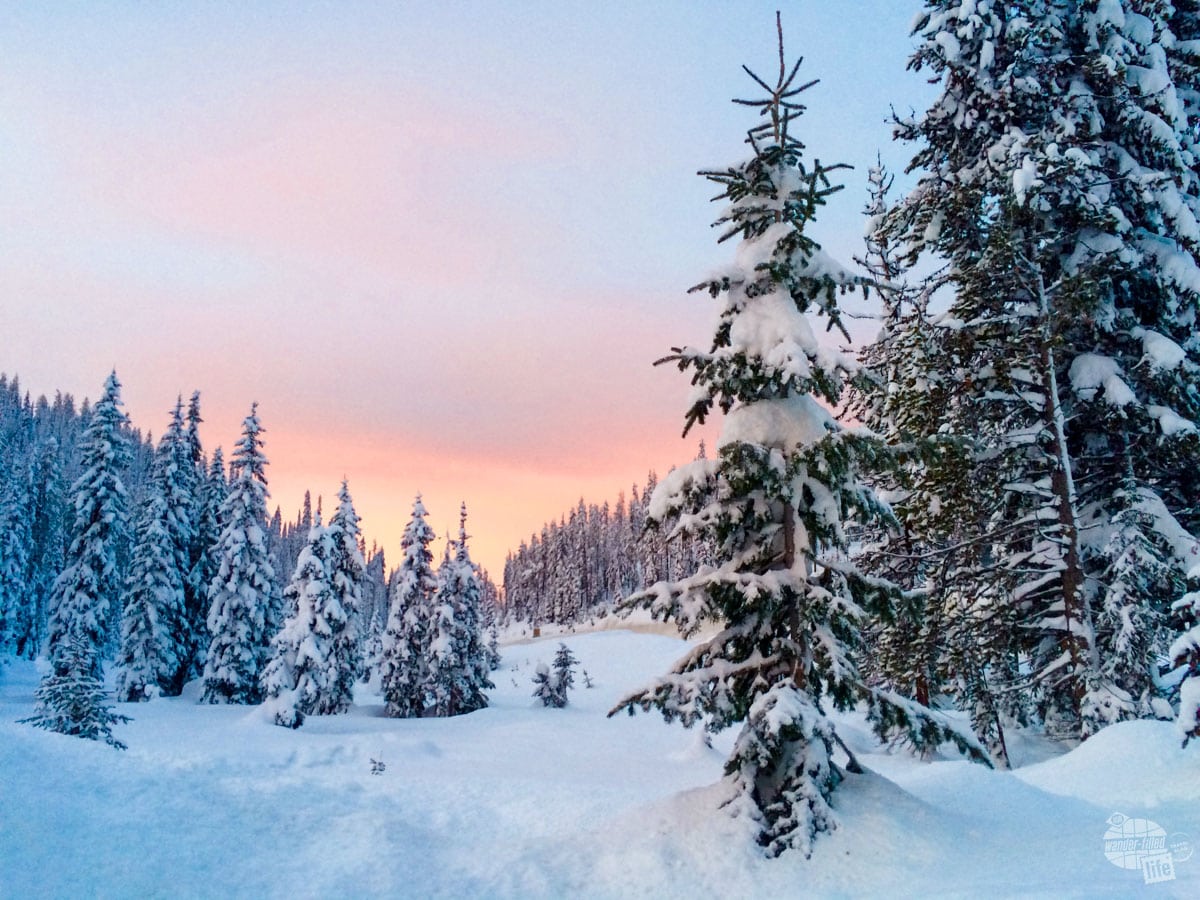
First and foremost, make sure your car is prepared for snow and cold weather. If you live down South, make sure when you take your vehicle in for service, you tell your technician you are headed to an area with snow and frequent freezing temperatures.
Make sure you have good tread on your vehicle. Low tread on your tires is especially worrisome in the snow. Also, consider getting snow chains for your vehicle. In many states, chains or snow-rated tires are a requirement in the winter.
We bought tire cables like these. Other than putting them on once to make sure we knew what we were doing, we have not needed these chains. The tires and four-wheel drive on the truck have been enough to get through the snow and ice we have encountered on our various trips. That said, we would not travel without them.
A recent addition to our winter road trip gear is a cell phone booster. The folks at weBoost sent us one of their Drive Reach Vehicle Cell Signal Booster Kits for us to test out on our 2019 winter road trip to New Mexico and Arizona.
The kit is pretty simple. You have a booster, which plugs into a 12V (cigarette plug) in your car, an antenna inside the car, which broadcasts the amplified signal and a magnetic antenna that mounts on the roof of the car. Some car roofs are not magnetic, so they supply an adhesive to attach the antenna.
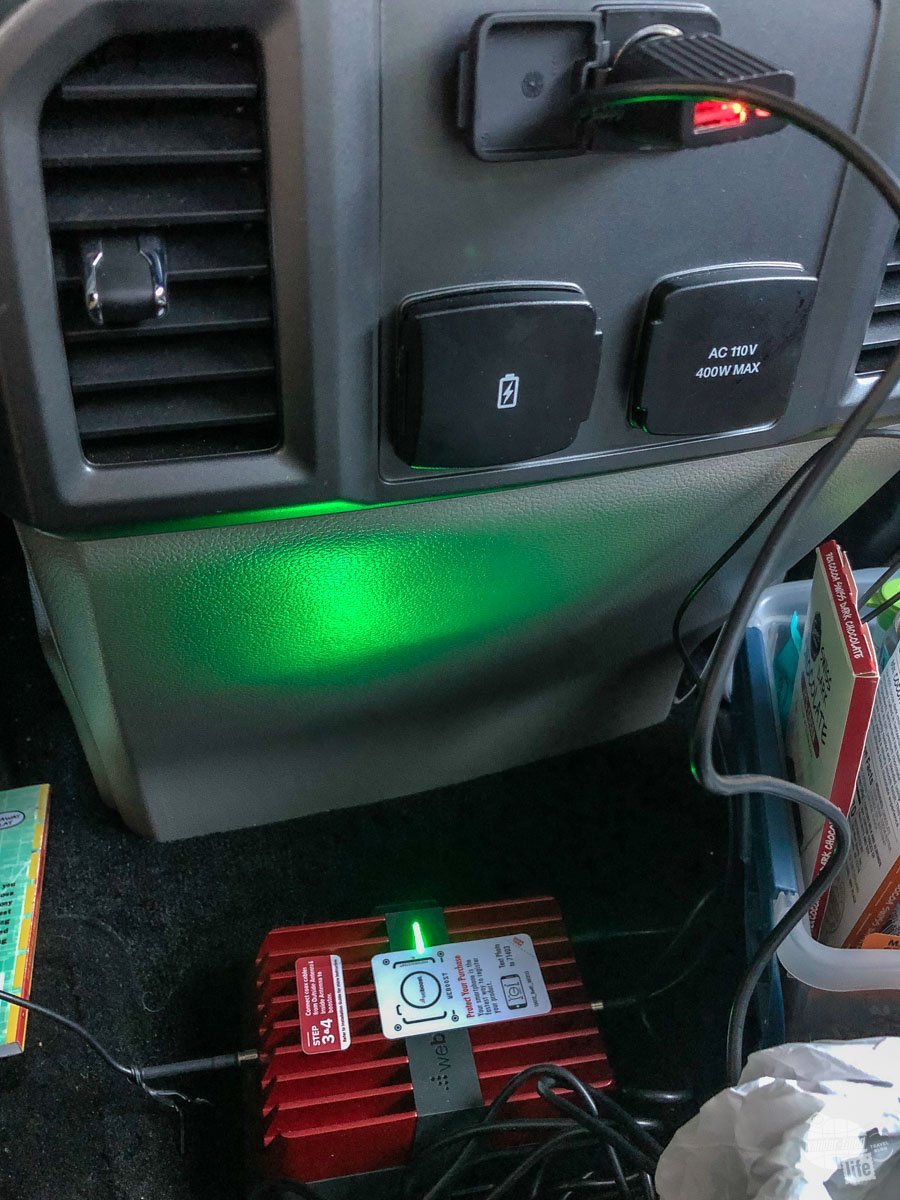
We tested it out on the way back from Gila Cliff Dwellings National Monument. This area is all but devoid of good cell service and pretty remote. We found an area with very spotty service and plugged in the kit. The service went from spotty at best to clear very quickly. We were impressed.
My only gripe is the magnetic antenna. It did not stick to the truck and I was reluctant to use the adhesive on the exterior of the truck. What I would really love is a more permanently-mounted antenna and to have the kit installed where there aren’t wires everywhere. Still, for emergency use, this kit is perfect.
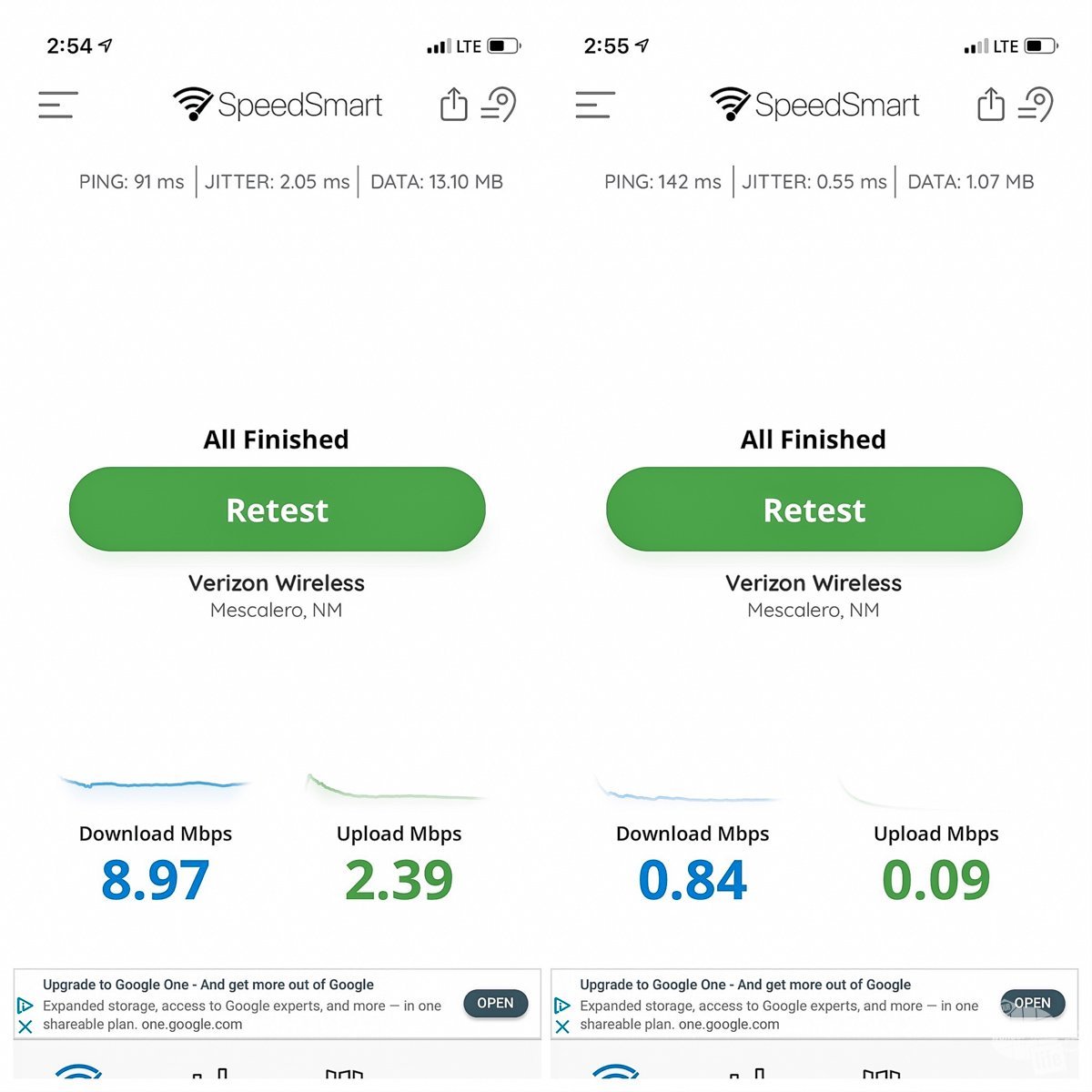
As you can see, the improvement of the signal was pretty impressive. We are already thinking about getting one for our camper to use when we have poor Wifi at a campground.
- Reaches The Farthest Cell Towers And Boosts Signal For Multiple Devices
- Compatible With All U.S. Carriers, Including Verizon, At&T, T-Mobile, And Us Cellular
- Supports The Latest In 5G Technology, Providing The Best Speed And Service Possible On Any Smartphone
Don’t Book Your Hotel Stays Too Far in Advance on a Winter Road Trip
Yes, it is good to make sure you have a room for New Year’s, but, otherwise, be mindful of the fact your plans can change and change quickly depending on the weather.
Even with great gear and four-wheel drive, it doesn’t mean roads or attractions will be open, even in the South. One of the biggest snowstorms we have encountered on the road hit last winter while we were in Williamsburg, VA. Several inches fell overnight and shut the entirety of the coasts of Virginia, North Carolina and South Carolina.
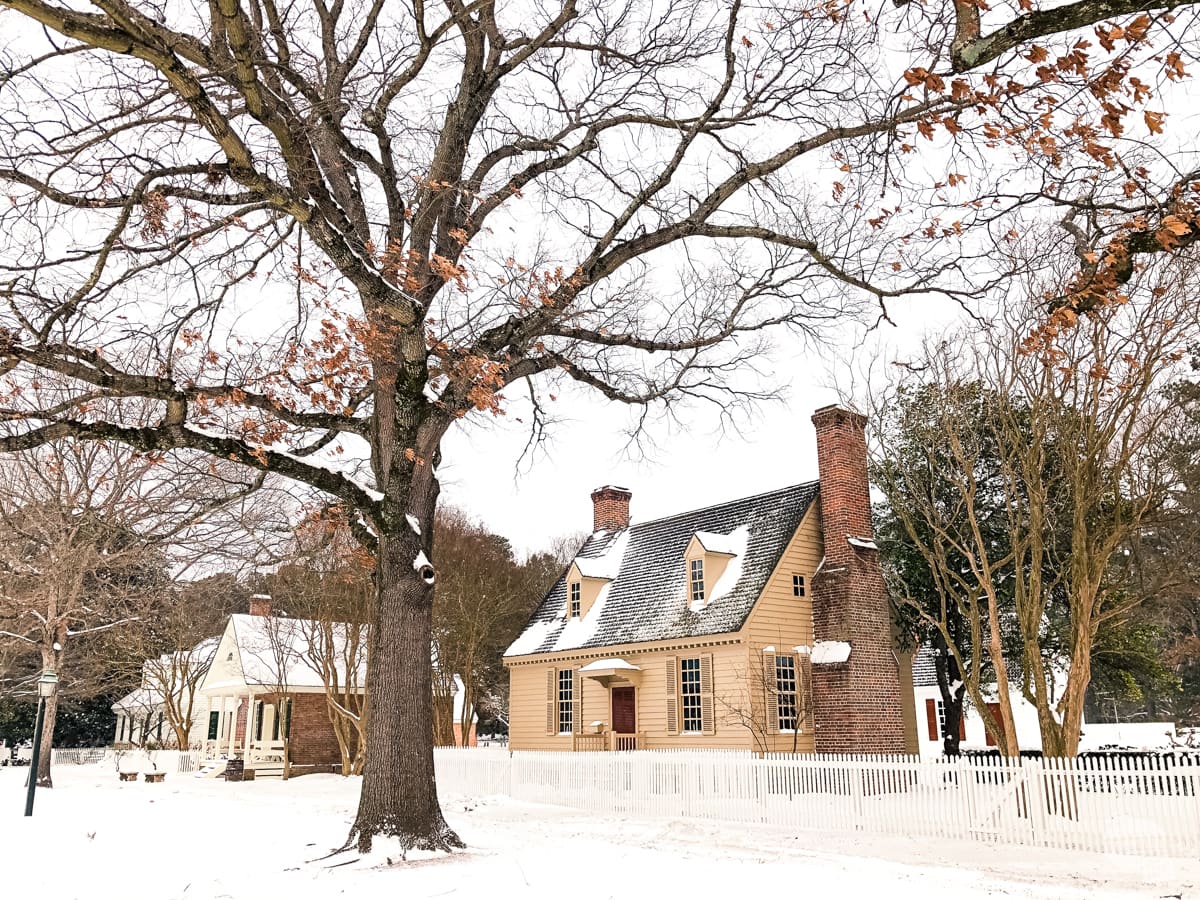
We had planned on heading down the coast to visit some national park sites but had to detour inland. That changed our plans altogether. If we had booked hotels, we would have had to cancel. Many hotels have 48-hour cancellation policies, including Hilton properties. That can end up costing you a bit of money.
Have an Emergency Kit
Even if you are driving the absolute best snow-capable vehicle out there, you cannot anticipate what might happen, even in the South, in the winter. You never know when a little bit of sudden snow will close an Interstate or your vehicle will break down, trapping you on the road in the cold.
We always have flashlights in the vehicle, as well as basic tools, but you are going to want to keep those and an ice scraper in your vehicle as well.
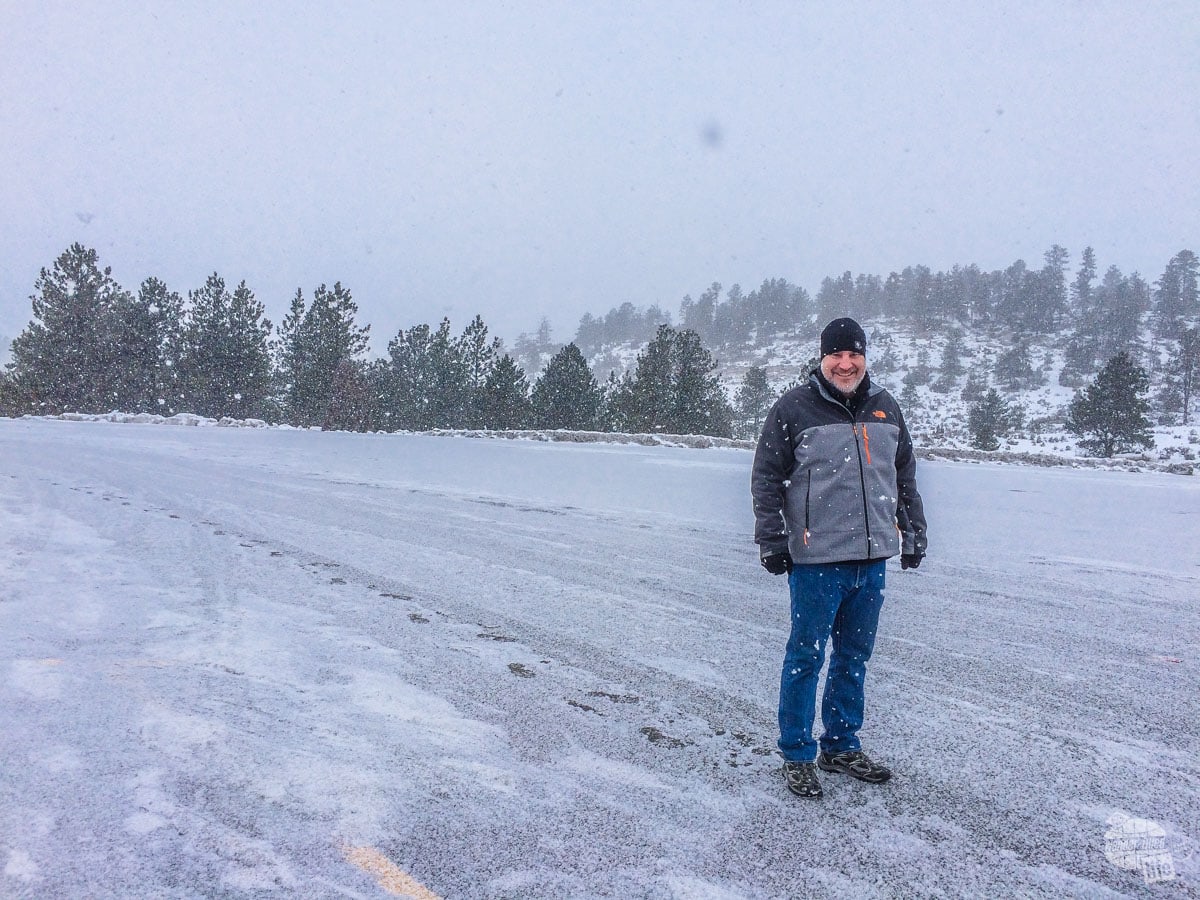
You should always have synthetic or wool blankets for everyone in your car. I also recommend a space blanket as well. Blankets work by using your body to heat the air held in the blanket. Space blankets are basically metal foil which reflects heat, preventing it from escaping. Synthetics and wool retain their insulating capabilities, even when wet. Combined, the two will keep you warm for quite a while.
You also want to keep kitty litter or sand with you. You can use this to give you traction on slick spots where your tires would otherwise slide. Additionally, keep some food and drink in the car with you. Since you are on a road trip, you should have some snacks with you, anyway.
Read more about what to keep in your car year-round for emergencies here.
Plan for Holiday/Winter Closures on a Winter Road Trip
One of the major things you need to plan for, especially in rural areas, is holiday closures. Traveling on Christmas Eve, Christmas Day and New Years Day (to a lesser degree) require forethought.
On our first trip out to Colorado, we spent Christmas Day driving across Kansas. We were really glad we had an extended fuel tank on our truck. We went a long time without seeing an open gas station, much less a restaurant for lunch.
In the South, you can typically count on Waffle House to be open. In other parts of the country, there is not the same level of certainty in terms of finding an open restaurant. We often end up staying at Hilton Garden Inns because we can generally count on the Garden Grill to be open for dinner. That said, call before you plan on it.
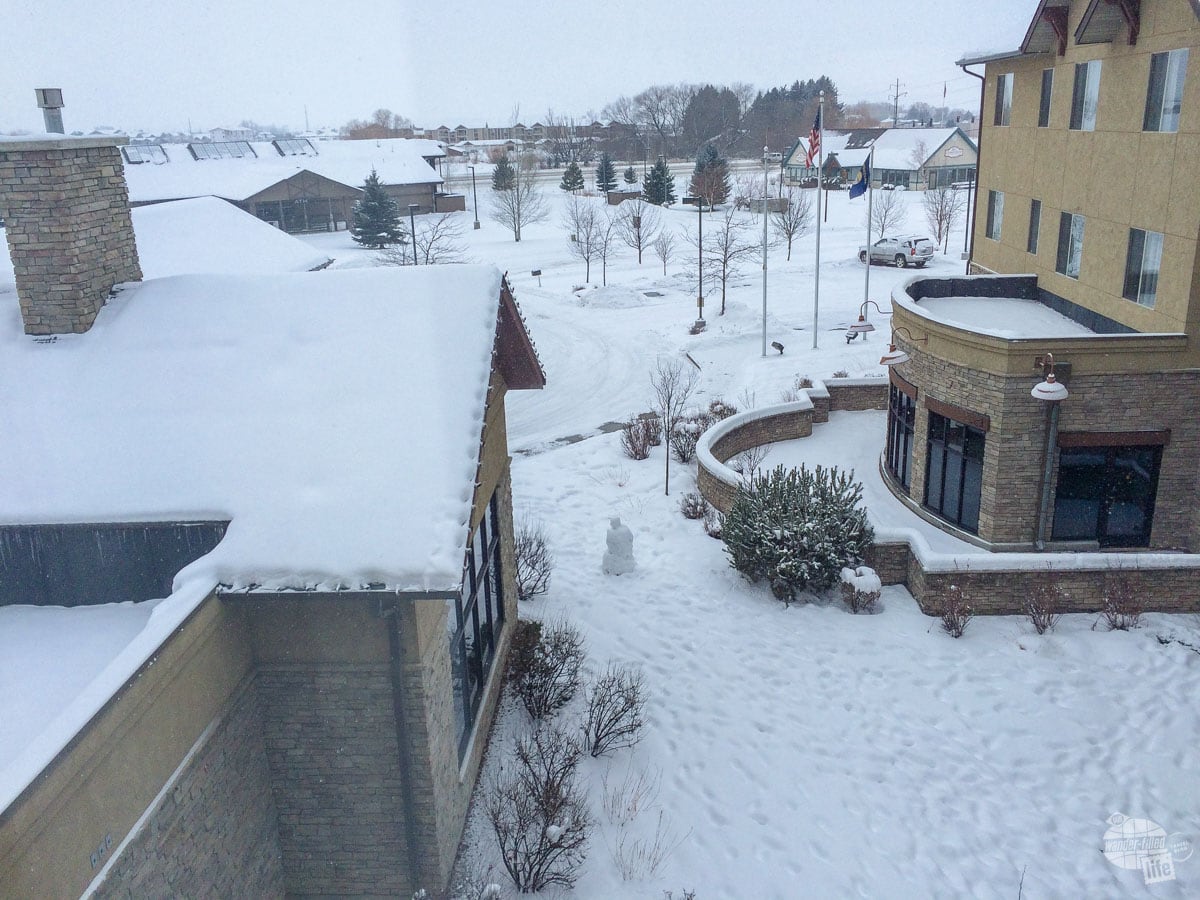
National Parks sites are typically only closed on Christmas and New Year’s Day but you need to make sure the site doesn’t have significantly shorter winter hours or is just plain closed in winter.
Last winter, one of the sites we visited, Piscataway Park in Maryland, advertised it had limited services, but we found no one there. Back in 2013, we figured out one of the sites we wanted to visit, the Sand Creek Massacre National Historic Site, was going to be closed the day we were able to visit.
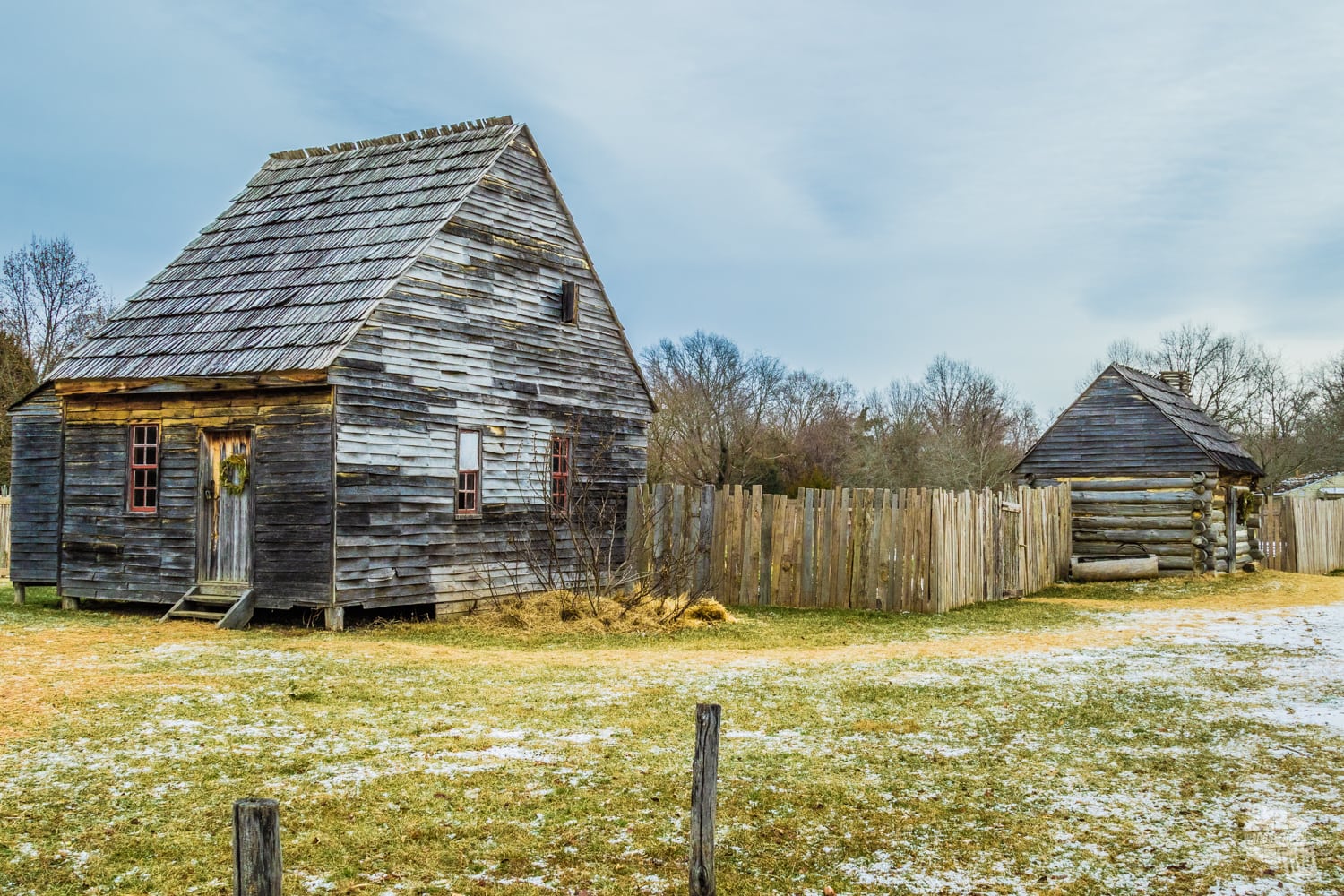
One plus to everything being closed on New Year’s is finding a good hotel to hunker down in and watch some bowl games.
Embrace the Cold with Good Gear
When I was in the Army, I hated the cold. I hated the wind and snow. The Army supposedly had supplied me with good gear for being outside in the cold. I was wrong.
Back in 2011, Bonnie convinced me to go snowmobiling in Yellowstone National Park. I was really impressed with how well my gear held up to temperatures as low as -15 in Wyoming.
The quality and effectiveness of winter gear have grown significantly in the past 20 years. The gear I have now is so much better than what I had in the Army. With good gear, I am happy to embrace the cold and enjoy getting out in it.
Pro tip: If you are going for a hike, leave your cotton at home. Synthetics and wool are the fabrics of winter. When cotton gets wet, it won’t keep you warm at all. In fact, it will rob you of heat. That said, we both often wear jeans when doing basic sightseeing.
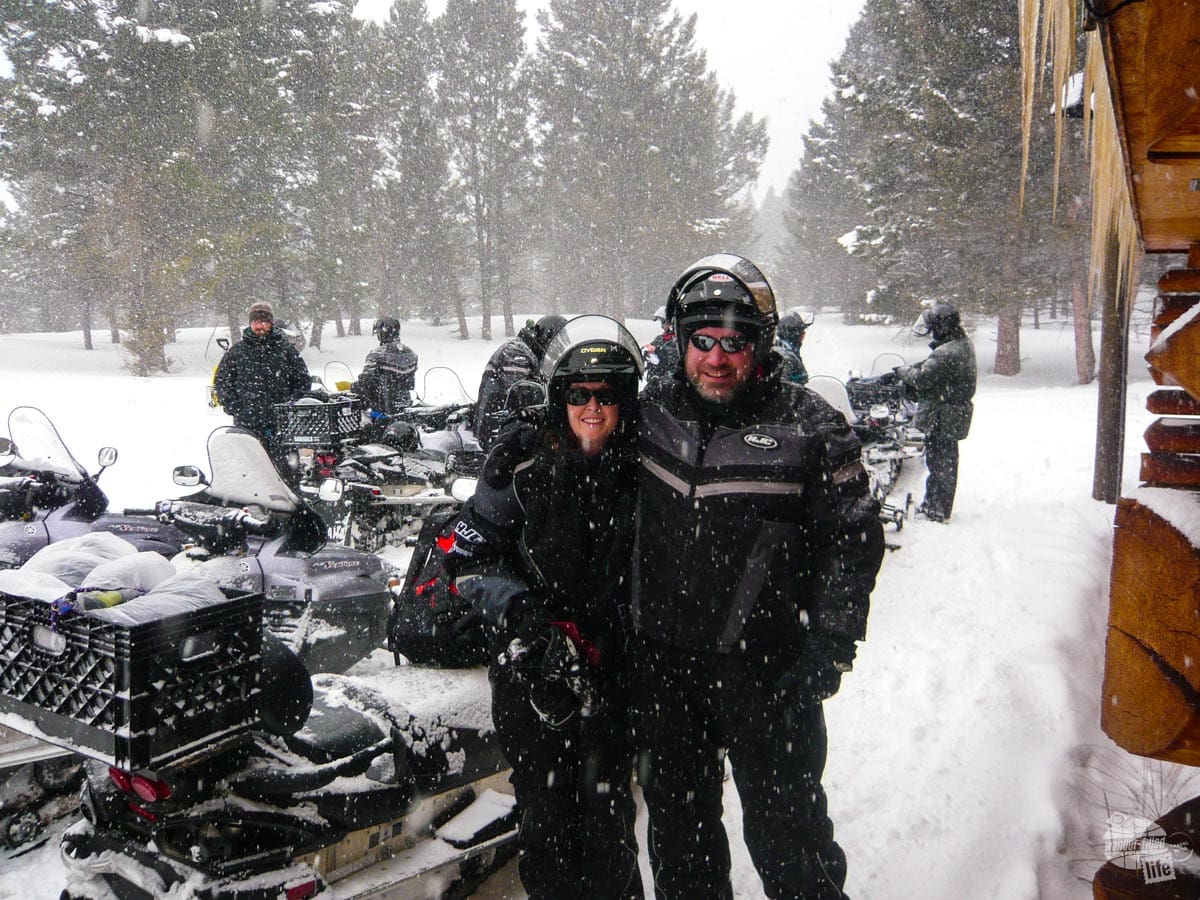
The key to comfort is layers. Understand that you will likely have to shed them quite a bit. We know when we get in the truck, our outer and mid-layers will come off as the truck warms up. But as soon as we step out for a brief hike or to walk around a site, those layers make all the difference between comfort and misery.
Read up on all of our gear recommendations for getting outside in the winter here.
Final Thoughts
While road tripping in the winter requires a lot of forethought and gear, the rewards are seriously worth it. Places that are insanely crowded in the summer give way to a peaceful solitude in the winter.
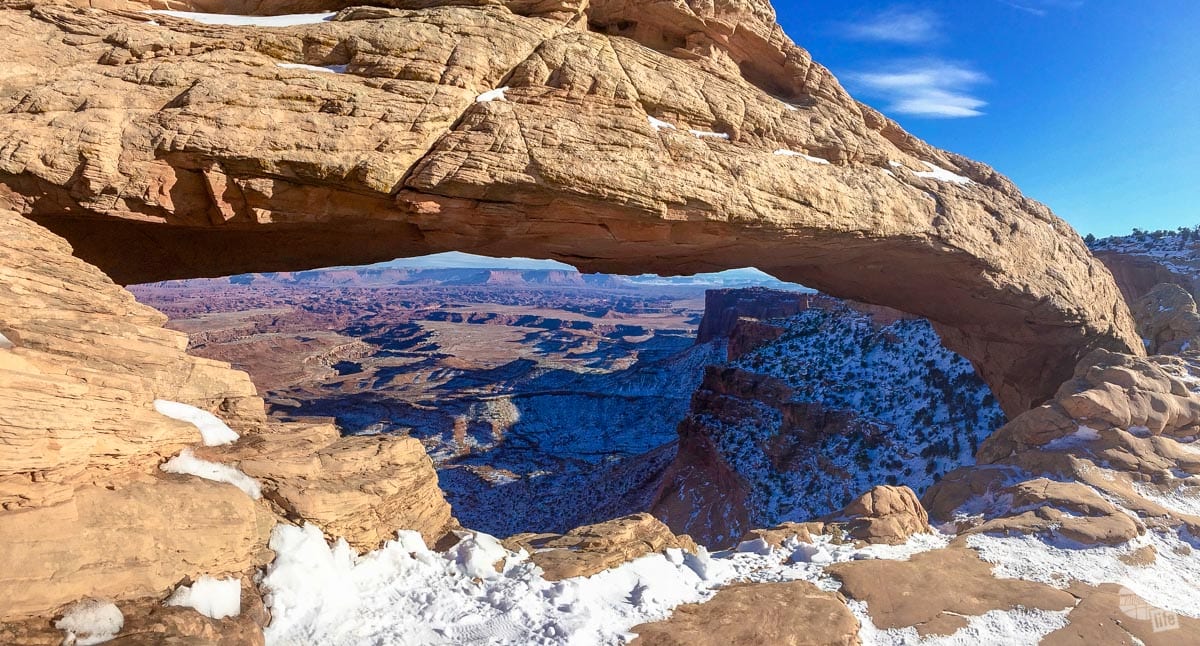
Yes, driving through a snowstorm can be a bit frightening. Especially if you have never driven in snow before. With the right gear, however, it can be a truly amazing experience.
Some of my favorite trips have been in the winter. While the cold is something to contend with, you can make the trip outstanding with the right mindset and some good gear.
Travel Resources
What do you use to find a flight?
We use Skyscanner to find deals on flights. Skyscanner has a great interface and compares tons of airlines for the best pricing and routing. That said, it does not always have every airline and some airlines will have better deals on their website. Still, Skyscanner is a great place to start.
Click here to search for a flight.
What do you use to find a hotel?
We typically stay at Hilton properties, so we use the Hilton website. You can find good Hilton Honors discounts or AAA discounts for a hotel there. We make great use of our free night certificates from our Hilton Honors American Express.
Click here to book a Hilton property.
If there are no Hilton properties available, we use TripAdvisor to read reviews and book the hotel. We find we can get the best price that way.
Click here to search for a hotel.
We recently partnered with Stay22 to add interactive maps to each of our destination posts. This will allow you to see a plethora of hotels and vacation rentals all in one responsive map of the area.
What if I need more space than I can get at a hotel?
We use Vrbo for the times when we have rented a cabin for a weekend getaway, like this cabin in Townsend, TN, or needed to rent a house for a large family vacation. We had a great experience with them in terms of refunding deposits when COVID hit and will continue to use them.
Click here to search for a vacation rental.
Who do you use for rental cars?
As a general rule, we book with Hertz for rental cars. We have had nothing but good experiences with them. Plus, we really like unlimited mileage and not worrying about crossing state lines. We have even rented from Hertz overseas in both Slovenia and Croatia.
Click here to book a rental car.
How about booking a cruise?
We have found some amazing prices for booking a cruise through Cruise Direct. We have saved a lot of money on our cruises compared to what we found elsewhere, making a last-minute Bahamas cruise even cheaper.
Click here to book a cruise.
What if I want to rent an RV?
We highly recommend Outdoorsy for RV rentals. We rented a camper van for a week to visit Rocky Mountain National Park for the elk rut and Custer State Park for the Buffalo Round-Up and had a blast. The program was easy to use and we really enjoyed the freedom of having a camper van for that trip.
Click here to rent an RV.
What do you use for booking tours?
We don’t often book tours. Typically, we like to do stuff on our own. That said, there are some experiences you can’t have any other way. So, when we do want to book a tour, we always check Viator first.
Click here to book a tour.
Do you use anything to get discounts on the road?
We make extensive use of both Good Sam and AAA on the road. Good Sam is normally regarded as a discount card for RVers at campgrounds and Camping World but anyone can use the 5 cents off a gallon at the pump at both Pilot and Flying J.
Click here to get a Good Sam membership.
We have had AAA as long as we have been married and it has more than paid for itself in discounts at hotels, aside from the peace of mind of having roadside assistance. Add in paper maps and the ability to get an international driver’s license and it is more than worth it for any traveler out there.
Click here to get a AAA membership.
